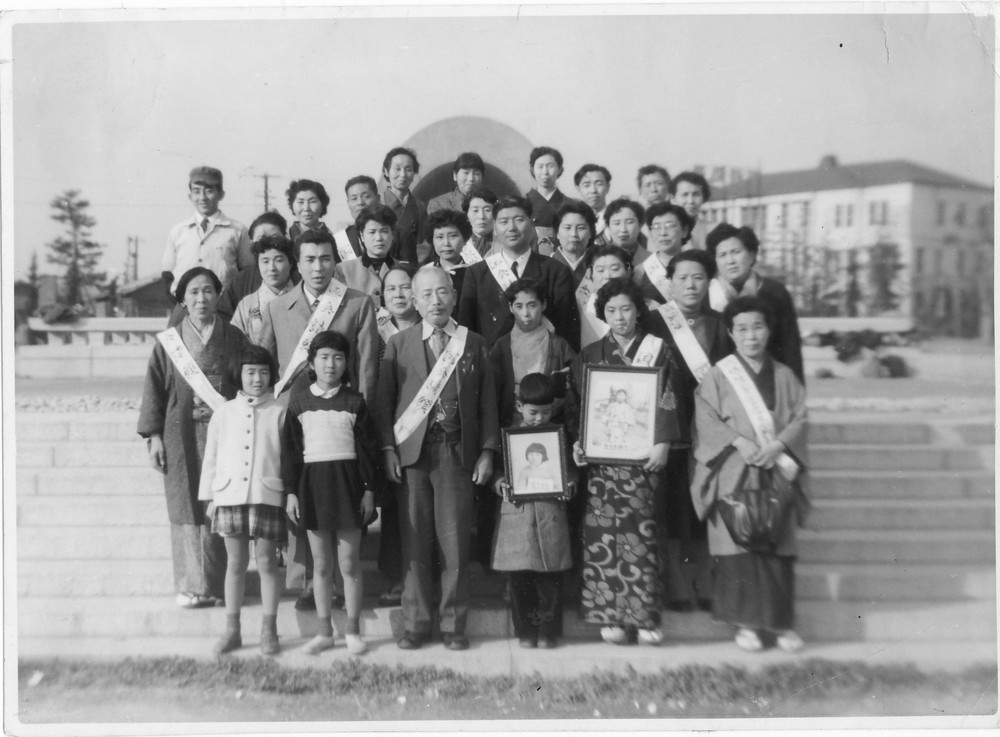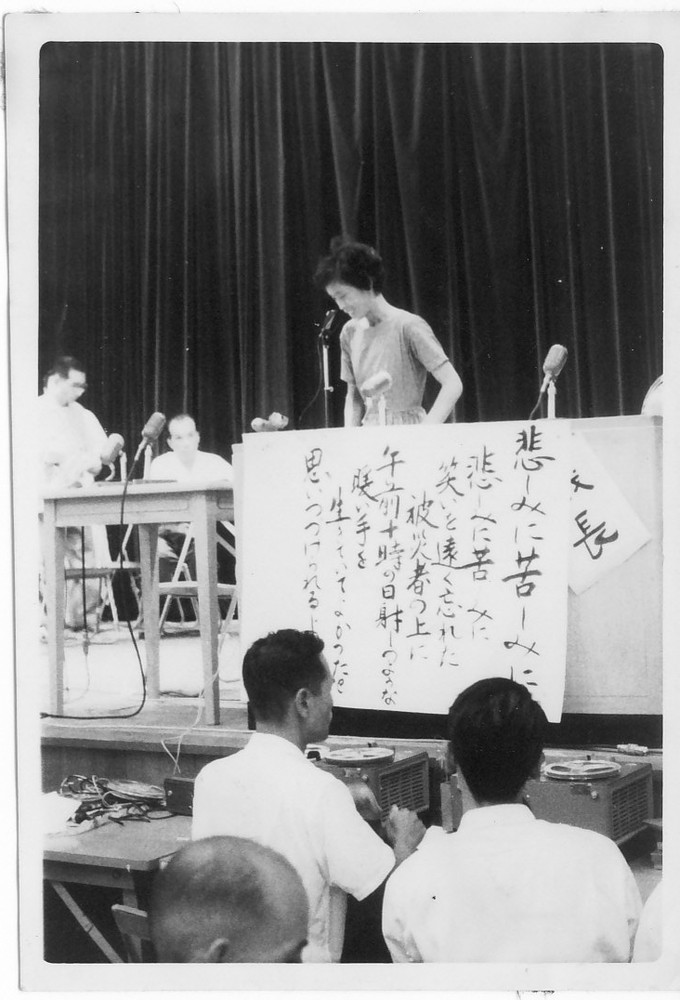Shizuko Abe
An A-bomb Survivor as a Living Testifier
7. Petitions to the Diet for the Relief to Hibakusha
There was a hibakusha in my town, whose name was Masuto Higaki. He lost his wife and daughter near the hypocenter and tried to make a list of hibakusha in Kaita. I helped him visit houses with a few people to find hibakusha. Thanks to his efforts, we could have a hibakusha organization called, “Kaita A-bomb Survivors Society.” In 1968, we published The Record of Hibakusha Talks, which included the A-bombing experiences of 240 hibakusha. I served as the president from 1995 to 2007, but unfortunately, I became the last president. Because hibakusha got older and no one could succeed, the organization had no choice but to be dissolved. The Japan Confederation of A- and H-Bomb Sufferers Organizations wanted us to make a hibakusha second generation organization, but we were negative about it because we didn’t want our children to take over our discrimination.

Around ten years after the A-bombing, Mr. Higaki repeatedly invited me to go to Tokyo with him and other hibakusha to submit a petition to the Diet asking for the support for hibakusha. Although my family were opposed to it, I decided to go to Tokyo. I wanted the Diet members to see hibakusha and give support to us. In March 1956, I took a night train with my second son, who had not gone to school yet, and other delegates. The train left Hiroshima at 2 p.m. and arrived at Tokyo at 9 a.m. the next morning. There were many media people and Diet members at Tokyo Station to see us.
We separated into different groups according to our election districts and visited Diet members’ houses. My group from Aki-gun visited Hayato Ikeda, then finance minister. He sincerely listened to us and said, “Next time, make an official organization and visit me again.” His words boosted the establishment of the Japan Confederation of A- and H-Bomb Sufferers Organizations. In 1954, two years before our visit, the Lucky Dragon No.5 fishing boat was exposed to radiation near the Bikini Atoll where America conducted a nuclear test. The opposition against A- and H-bombs was growing nationwide. In 1955, the first World Conference Against Atomic and Hydrogen Bombs was held in Hiroshima. Hayato Ikeda’s words encouraged hibakusha to consolidate organizations throughout Japan, and the Japan Confederation of A- and H-Bomb Sufferers Organizations was established in 1956.
Mr. Ikeda also said, “Japan is afraid of giving trouble to America.” When I heard that, I felt that the government neglected hibakusha out of consideration for America. Then, we all visited Ichiro Hatoyama, then prime minister. Unfortunately, he was not at home, but his wife sincerely listened to us.
Our petition didn’t go well as we had expected, and we came back having a sense of emptiness. In the night train going back home, a poem came up in my mind.
To our grief, to our sufferings,
To hibakusha who forgot to laugh for a long time,
Hold out a warm helping hand like the sun at 10 in the morning
So that hibakusha can have the joy of living in the future.
This poem came out from the feeling that we didn’t want the strong sun at noon, but just the morning sun at 10 a.m. Someone gave this poem a melody, and the song was sung in various meetings. When I was invited to the World Conference against A- and H- Bombs in Nagasaki, the words of this poem were put up on the stage and we all sang it together.
